Kostas Metaxas is the creative powerhouse behind high-end brand Metaxas & Sins. As well as his wonderfully inventive “High-end audio sculptures”, he has an extensive collection of concert recordings from some of the top names in the music world. Not limiting his imagination to the audio world, Kostas also designs for some of the most well-known luxury brands in the world.
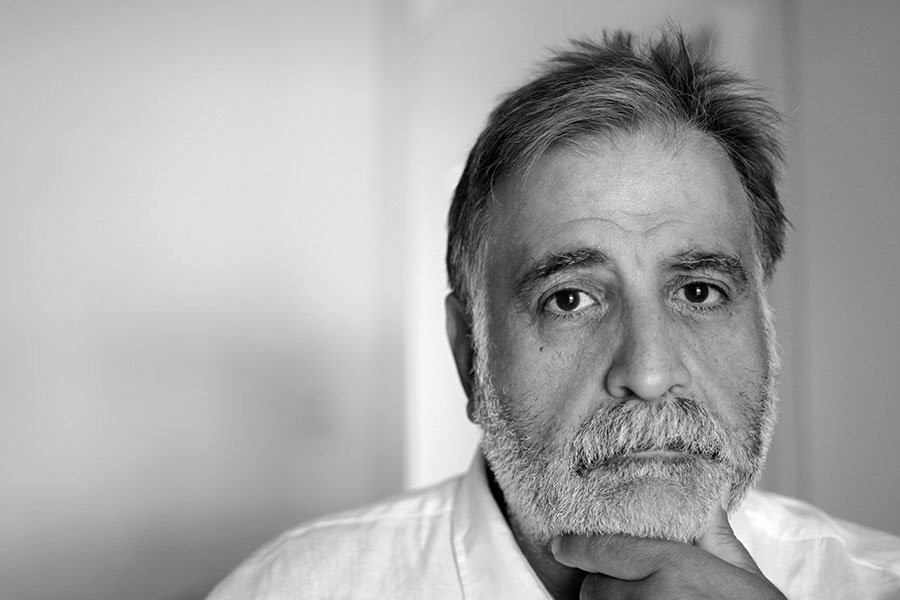 HP. You haven’t always been involved with the audio industry judging by some of the photographs we’ve seen and the stories that you recount, what did you do and where were you based?
HP. You haven’t always been involved with the audio industry judging by some of the photographs we’ve seen and the stories that you recount, what did you do and where were you based?
KM. Actually, Audio was my first business once I left University. It started as my passion as a teenager in High School [~13 yrs old]. I studied at Melbourne University, and in the 3rd year of a Medical Sciences degree [BSc], I left to study in Heidelberg Germany. Whilst there, I met some like-minded audiophile students, one who introduced me to one of the bigger Hi Fi dealers in Mannheim. I had never heard the biggest, most expensive brands as a teenager [I couldn’t afford them] so I was keen to hear how “bad” my preamplifier [that I had brought with me] was. After listening to a few tracks of one of his “Reference” LPs, the dealer was so gobsmacked that he asked me to make some for him. I decided to follow my dream and return to Melbourne, Australia to make them [to my parent’s horror]. He subsequently submitted it to Klaus Renner’s “DAS OHR”, the equivalent of “Harry Pearson’s The Absolute Sound” in Germany which praised it. It took quite some time for me to wrap my mind around the fact that I could create one of the best amplifiers in the world. Once that sinked in, it was my first epiphany. I would use the challenge to fuel me to try harder. The education system in Australia at the time, encouraged you to excel in sports, but little else.
HP. What was your first involvement in the industry and when was this?
KM. My first involvement in the industry as a “producer” was in 1981 , but prior to that, even at the age of 13-14 yrs old, I was tinkering with “kits” reading the local and international Audio hobby magazines [ The Audio Amateur, Wireless World, etc] and following the work of some of the luminaries of the time – John Curl, Peter Walker, Bob Carver, Nelson Pass, Matti Otala, Leach, Cherry, Linsey Hood, Peter Baxandall, Doug Self…
My second epiphany was when I purchased a pair of Quad ESL 57’s with modified treble panels. With many classical recordings that used them as monitors, they were like “looking through a window into the orchestra”.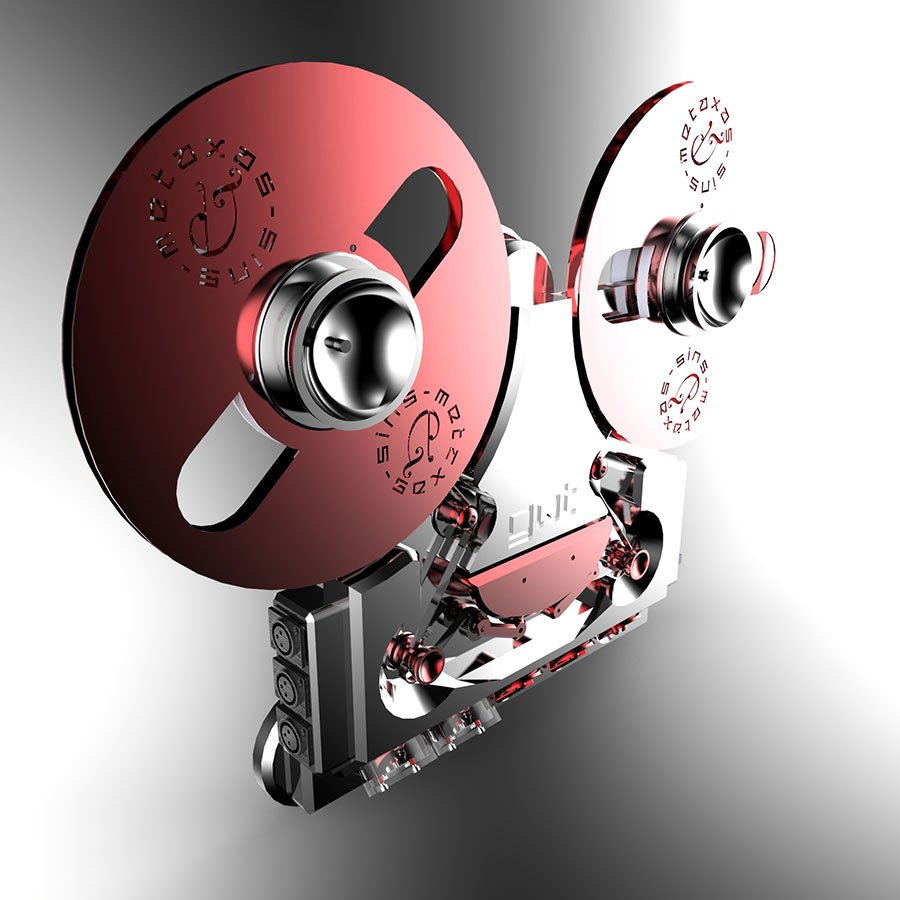
HP. There’s a story you have that involves Ron Jeremy the porn star, care to share it with readers?
KM. It was in Las Vegas ~ 1991 when I was asked by someone if they could use the bathroom in my Audio Demo Room. . I was busy fielding questions from some Distributors so I didn’t think twice about it and replied “sure”…They [Ron Jeremy] took his girlfriend into the bathroom with him. It was only when I realised they’d been in there for 30 minutes, that I started to worry. One of the important Audio reviewers of the time – Ken Kessler, decided to visit my room at the exact moment that the bathroom door opened and the chap and his half-dressed beau ran out. Ken Kessler screamed out “That’s Ron Jeremy” [ a US Porn Star] ! I didn’t know who Ron Jeremy was and that’s how I first met Ken Kessler…and learnt about Ron Jeremy [who left me some autographed photos in the bathroom].
HP. How did you first get into manufacturing audio equipment?
KM. The German Dealer was the catalyst for me going into business at the tender age of 20 yrs old [1981]. I learnt very quickly that I need some “other” income, so I studied “DAS OHR”, “TAS” and started augmenting my income with some imported products , mostly from Europe. That helped to put my company on a firm financial footing [~ 1982/83].
HP. What was your breakthrough product?
KM. The PP1 Pre-preamp reviewed by Klaus Renner started it all. The following products HAD to be as good, if not better. Then the other German Press “STEREOPLAY”, “AUDIO”, “HI FI EXCLUSIV” etc, started praising the sound of my other products – preamplifiers, power amplifiers, electrostatic speakers and digital CD players/DACS and I was rated as “Absolute Spitzenclasse, REFERENCE”. This, of course helped enormously. Germany was my first important market followed by Switzerland, France, Italy and then the UK. After Europe, we started selling well throughout Asia.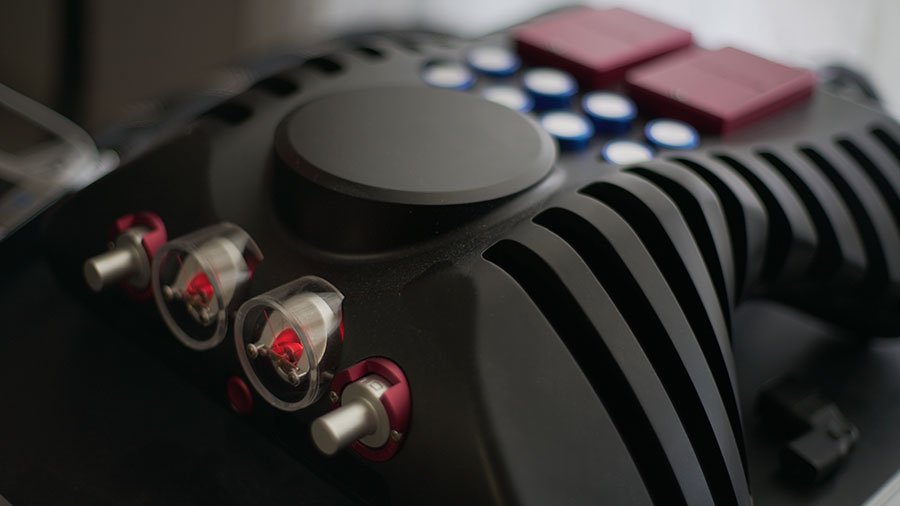
HP. Your more recent products blur the lines between art and technology and you call your pieces “High-End Audio Sculpture”, does form follow function or are you looking to make a visual statement first and foremost?
KM. Both elements are equally important. Luckily, I’m both an artist and engineer and I can work in both intellectual planes at the same time. In my earlier designs, I was more BAUHAUS – form follows function, but these latest designs are very different. I remember a conversation with Christian Louboutin [shoes] who told me “Form Follows function can end up being boring and repetitive”…and I agree. This explains the “same-ness” of many audio products. In the case of my new collection, the design came from some ideas I was developing for an Italian furniture manufacturer. In particular, a Chaisse Longue. I was also developing a “helix” pen for S.T.Dupont , which naturally became the “heatsink”, so the combination of these elements led to the amplifier cases. The speakers, essentially follow similar organic, flowing lines but with a female form. It probably represents beauty in its purest sense. The power amplifiers deviate slightly and seem to combine a flowing organic form with a more “animal” masculinity – like a crouching tiger.
HP. Your design and manufacturing process is a little out of the ordinary when compared to many other manufacturers, tell readers about your design and manufacturing philosophy.
KM. I like to make objects that are simple, classic, distinctive and iconic. They must “get out of the way of the music”, and allow an emotional connection with the music. I try to avoid using logic/software [no remotes] because I like to think that even in 100 years from now, they can be easily repaired and restored because they are purely mechanical with parts that can be updated or replaced by a technician or enthusiast [not surface mounted hi-tech]. They are modular so they can be updated and are future-proof. The cases MUST be sculptures to add more intrinsic value to the object. I truly try to marry art with technology and avoid one as a compromise of the other.
HP. Who is the Metaxes& Sins hifi customer?
KM. Someone who loves music and art…and “gets it”. It has to resonate with them – visually and musically.
HP. Which other hifi brands do you admire and why?
KM. I admire brands like Stellavox. Georges Quellet is really the unattributed inspirer of High End Audio – Mark Levinson, like myself, was inspired by Stellavox. Apart from Stellavox, I’m not really inspired by Hi Fi brands – this is not to say that I’m not impressed by some exceptional products produced by my colleagues at Gryphon[Flemming], or Nelson Pass, Jurgen Reis [MBL], the late Charles Hansen…etc, but I’m more inspired by design and the fine art sculptures of Fernando Botero and his wife Sophia Vari [my fourth epiphany] …I’m always looking to bring “more” to the object than just a functional piece of electronics. I like to think that this new collection will be testimony to these “times” and [with humility] hopefully be seen as real sculpture that can be exhibited in a Museum in 100 years from now.
HP. You don’t just design audio equipment and have been commissioned by some very high-end brands, how did these commissions come about and which project so far has been your favourite?
KM. My “other” business is documentary profiles on the individuals involved in the cutting edge of design and art – fashion, architecture, design, art, gastronomy, jewelry, watches, cars, collectibles etc. so it has allowed me to meet and learn from many like-minded creative people. When there’s a resonance in personalities, one thing leads to another which is how I’ve met with many of my clients. The most important ingredient for a collaboration, is they need to “like” my work, which thankfully they do. Most of my client love the fact that I come from “outside” of their industry, that I can revisit old ideas with new eyes. My favourite project is always the next project! I’ve had fun doing all sorts of objects. I regularly do work with S.T. Dupont in Paris, but also with Swiss SWIZA [L’Epee & Matthew Norman] clocks. Many companies I can’t mention for contractual reasons.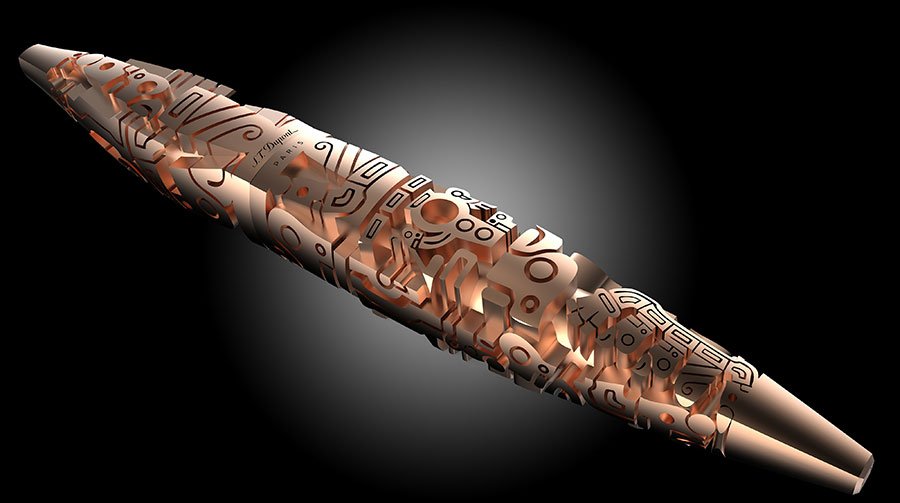
HP. You are well known for having hundreds of tapes of live recordings you have made, what is your recording process and tell readers about a couple of your favourite recordings you’ve made, the story behind them and why they are your favourites.
KM. I’ve probably recorded over 500 concerts, mostly in the period 2004-2008 and at least 300 with my Stellavox machines. The first recordings were done with 2 x B&K [Bruel & Kjaer] 4133 [1/2″ capsules] directly into the Microphone inputs of the Stellavox. Then I upgraded to the B&K 4135 [1/4″ capsules] which were much faster, but noisier. Approx 10 metres apart and 2-3 metres from the performers, these were a real “window” into the reality of a concert. Finally, I started using a modified Stellavox AMI48 mixer and fed it with 4 x Neumann TLM 50 and 2 x Neumann M150 [valve] microphones using a maximum of 4 microphones per concert. Two in “AB” [10 metres apart] and two in “XY” in the centre [400mm apart] The M150’s has the “bigger” sound with more “bloom”, but is not as detailed as the TLM 50, which are the “transistor” equivalent [both microphones embed a 1/2″ titanium omnidirectional capsule in a 40mm acrylic “ball”]. By doing a simple mod to the TLM50 – bypassing one capacitor in the signal path, I was able to extend low the frequency response to give some of the positive attributes of the M150, but with more detail.
2006 [My third epiphany] for me was my “golden period”…performers like Martin Breeze, Alison Wedding, Belinda Moody, Jex Saarelaht, Jamie Oehlers, Adam Simmons, Nick Tsiavos…and many many more. Samplers are available to download online. Audiophiles who have listened to just the 44.1kHz/16bit WAV versions with a good system are firstly gobsmacked with the sheer “huge” soundstage space and then beguiled by the realism. All my recordings are raw, unmastered, just dubbed to digital, but also are available as copies of the master tape. If you want to hear what a real voice should sound like, these are absolute reference.
To be able to record incredible musicians, pouring their heart and emotion through their instruments, to be there to listen, record it AND get lost in the music, apart from my creative work and the love of my family, these are the things that make life so incredibly special…to me.
I’ve also been blessed to cover Jazz & Classical festivals, Chamber Music competitions and Opera, so I’ve been lucky to record many famous performers too [Sir Neville Marriner, Nigel Kennedy, Paul Lewis, Jean-Yves Thibaudet, Charles Dutoit, Dennis Neill, Chic Corea, Herbie Hancock, etc], but sadly, these recordings cannot be commercially released, they are just for my personal use.
HP. Putting aside your own recordings, what are your favourite three pieces of music and why?
KM.
1. Joni Mitchell “Travelogue” – 2 CD set. Joni’s poetry, beautifully arranged and orchestrated.
2. Pat Metheny – I interviewed Gary Burton who taught and mentored Pat. Genius at combining modern “symphonic” jazz with world music. Great examples “SECRET STORY” and many of his other albums.
3. Puccini – “Mamma Mia”… too many arias to mention, that drill through my core and reduce me to a quivering primate.
HP. Your latest design is a reel to reel recorder that we have announced in this edition of Hifi Pig Magazine. The interest in reel to reel is growing in audiophile circles, tell us why you think this is and about the design and styling of your new reel to reel project.
KM. About 10 years ago, the Hi End press [Valin in TAS] started talking about Tape Recorders and discovered that the sound was considerably better than phono and digital playback. I’ve known this since the early 1980’s when I owned one of the first Goldmund Reference tables, 5-6 incredible tonearms, Clearaudio, Koetsu, Kiseki, Ortofon SPU etc cartridges. My first recordings on the Stellavox – without any knowledge/experience in recording, were so incredibly “real” that this instantly became my reference. Since the machines were very simple and logical in construction, they were also easy to improve. So each recording became an opportunity to improve the “sound”.
Improve is probably a harsh word. In most cases it was getting rid of the Broadcast/Radio/Studio bloat-hardware that each machine was saddled with, and bringing it back to what Quellet first developed on his kitchen table. Then tweaking it.
It took me at least the first 50 concerts to get things to a level of mind-boggling transparency, after that, it just depended on the musician and his repertoire.
The GST machine I’m working on is simply the next logical step to the Stellavox – simpler, stiffer, dual mono, native 10.5″ reels, taking advantage of 2018 technology of precision machining/CNC compared to what they could do in the 1960’s.
As for the styling, I see it in a similar way to a mechanical watch. I’m hoping to create a real iconic piece of “Kinetic art” with the GQT. But also a serious piece of recording “kit”.
HP. Your portfolio of products now includes amplifiers, preamp, headphone amplifier, loudspeakers and of course the reel to reel, what do you see as the next design project for you and Metaxas and Sins?
KM. When I launched this new collection 2 years ago [2016], I started with the amplifiers [IKARUS, SOLITAIRE and OPUS], 2017 introduced the MARQUIS Headphone amplifier and speakers – Macrophones & SIRENS, 2018 will launch the GQT Tape Machine, a DAC [and ADC]. In 2019 I have scheduled to produce a media server/player and perhaps even a smart-phone-watch. That’s what the “Sins” – Andreas and Alessandros are particularly helping with.
Concurrently, I’m also launching other products, Fountain Pens, Clocks, Leather Goods, Furniture, so my object universe is always evolving.
What makes Metaxas & Sins a lot of fun for me is that at this particular moment in time, I can develop an object 100% in-house and have a prototype made in a cost-effective manner very quickly. I can literally have a real object in my hand within a few months of developing it. In the past, this took years.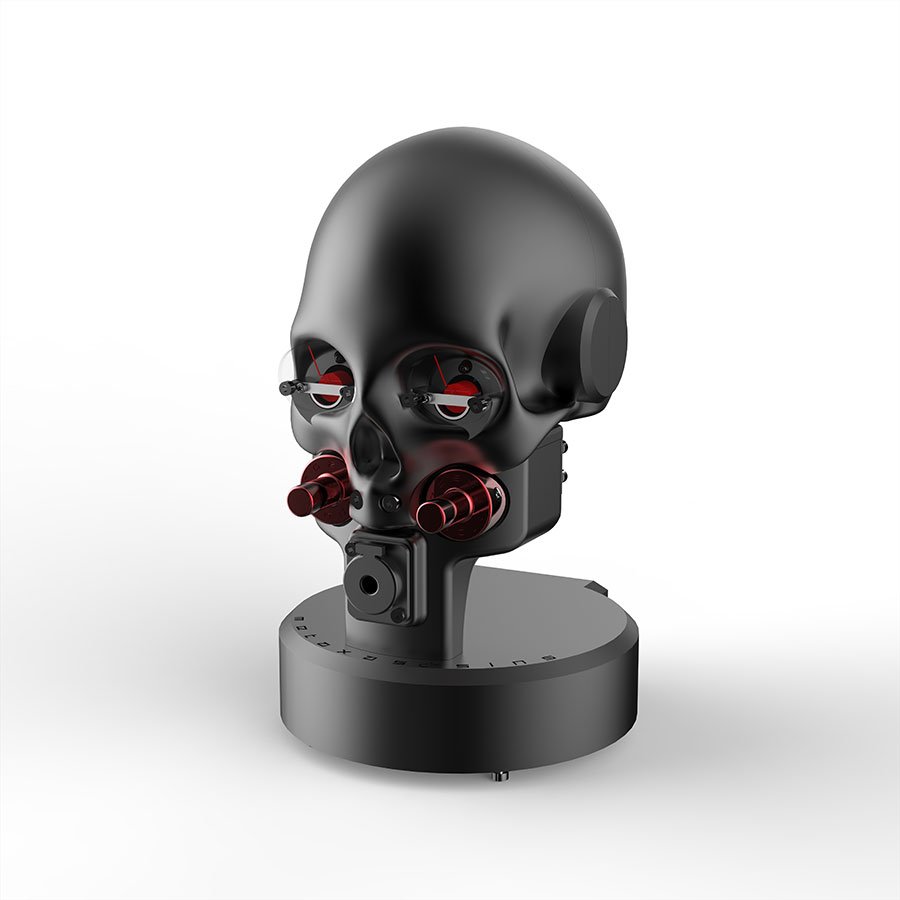
HP.You are seen as one of the hifi brands that is putting the fun back into the industry (thank you!) Where do you see the industry going in the next 10 years?
KM. The Industry has to “smell the roses”. It is a luxury product and needs to join the “luxury business” and not be seen as a club for a few grumpy old audiophiles. It needs to embrace young music lovers – initially through “personal audio” and introduce them to the pleasure and “world” of 3D hi end holographic sound. At the same time, it needs to support the creation of music and the purist recording of it. Otherwise, in the future, we will have expensive hardware with no software to play on it except for the same Johnny Lee Hooker LP in 100, 120, 140, 160, 180gms…
We need to keep it fun. Music is fun. It’s my most blissful narcotic without any harmful side effects.
HP. Let’s imagine you have a whole weekend free, no work, no hifi shows…where in the world would you go and what would you like to do?
KM. It’s what I do every day when I’m fortunate to spend time at my holiday house on the Island of Evia in Greece. I enjoy a coffee in the morning with friends, and in the afternoon bumping into friends at the string of beaches I snorkel through.


















































































































































































































You must be logged in to leave a reply.